Introduction
In the last two posts I looked at hardware for receiving CubeSats as well as software for decoding the signals (Ref.1/2). In this post I will put this all together for real time CubeSat signal captures. Compared to receiving NOAA15/18/19, I find CubeSat reception quite difficult. First the frequency is higher so there is much more attenuation (20*log10(437/137))=10dB). My Vee dipole only has a few dB of gain so it has to be pointed more accurately than before. I also tried an ATSC/UHF antenna which has higher gain but narrow beamwidth. I pointed this due east and found this to be effective if the CubeSat sends a packet while in the antenna coverage.
I tried using SDR# and Gqrx for processing the RTL-SDR. Both have excellent properties. SDR# allows you to capure IQ as well as audio WAV files. Gqrx allows streaming UDP packets as well as saving audio WAV files. The CubeSats have Doppler shift, which means that if you preset the receive frequency, then a single receive packet may be off frequency. If you use saved IQ data, then you can play the file back and shift the frequency to place the packet on the correct receive frequency.
Initially I tried receiving EIRSAT-1 because it was one of the most recent launches that I noticed on the Wikipedia CubeSat page. It transmits at 437.1MHz using GMSK 9600. So I concentrated on this frequency and modulation, as there are literally hundreds of CubeSats to choose from (Ref.3). You need to cross reference this list with those satellites that are supported by gr_satellites (Ref.4).
Reception Parameters
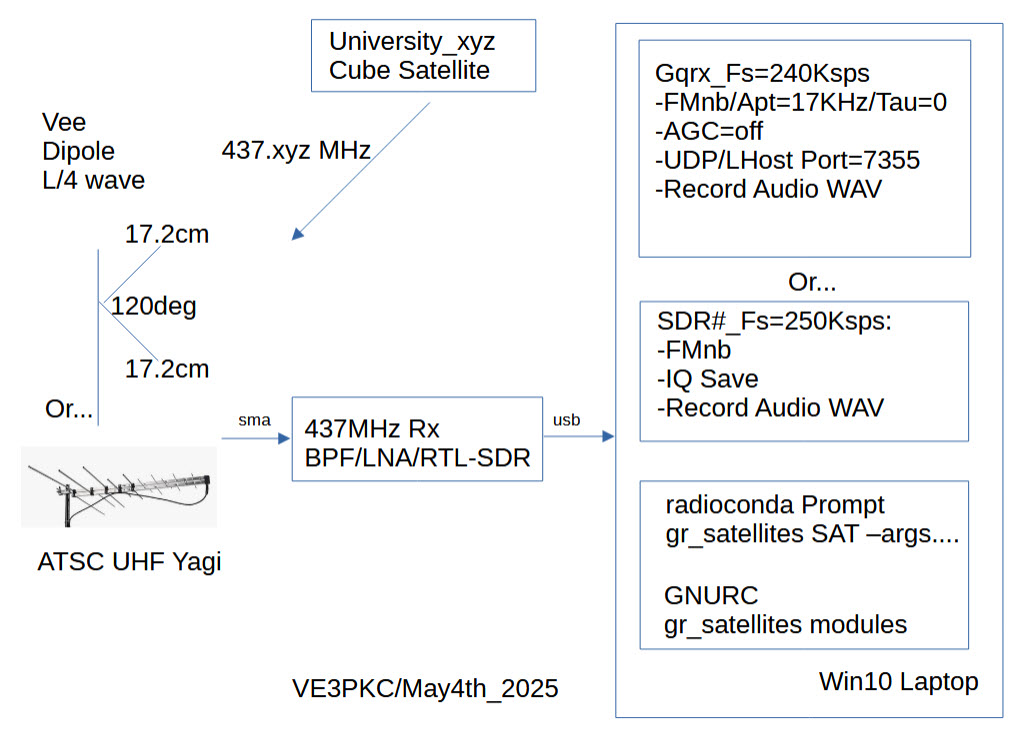
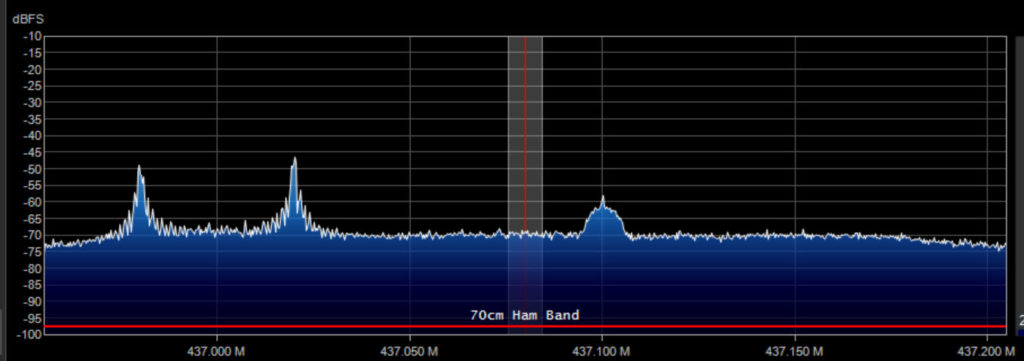
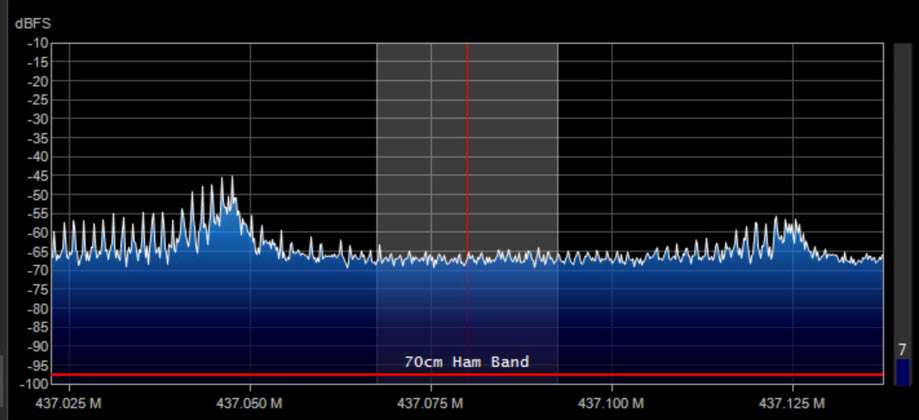
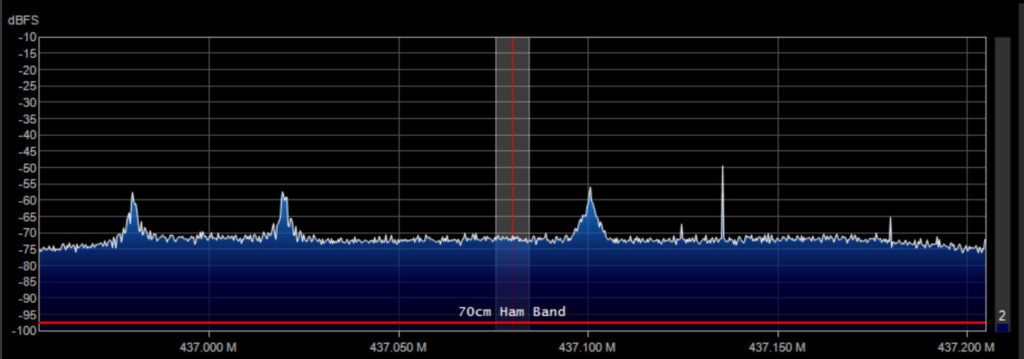

Figure 1 shows the equipment setup. I quickly found that the 433MHz band has many signals lurking around my intended frequency of 437.1MHz. Figure 2 shows a Telemetry/FSK like signal at 437MHz +/-25KHz. As well there is a GMSK like signal right on top of 437.1MHz with no Doppler shift. This signal comes on at random intervals approx every 15-20m with about 8 pulses. Figure 3 shows a very strong Telemetry/FSK type signal at 437.050MHz & 437.125MHz which pulses approx. every 20secs. Finally Figure 4 shows an in band FM voice transmission right on 437.1MHz!! Figure 5 shows a list of 3 CubeSats on 437.1MHz: EIRSAT-1, KUZGTU-1 and MORDOVIA-IOT.
Signal Captures – EIRSAT-1
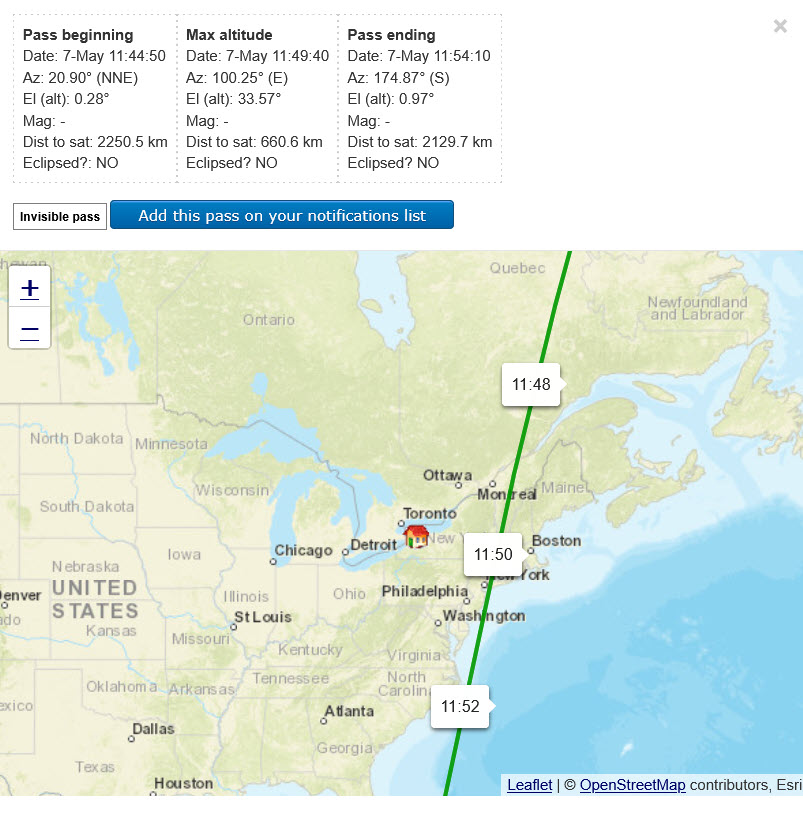
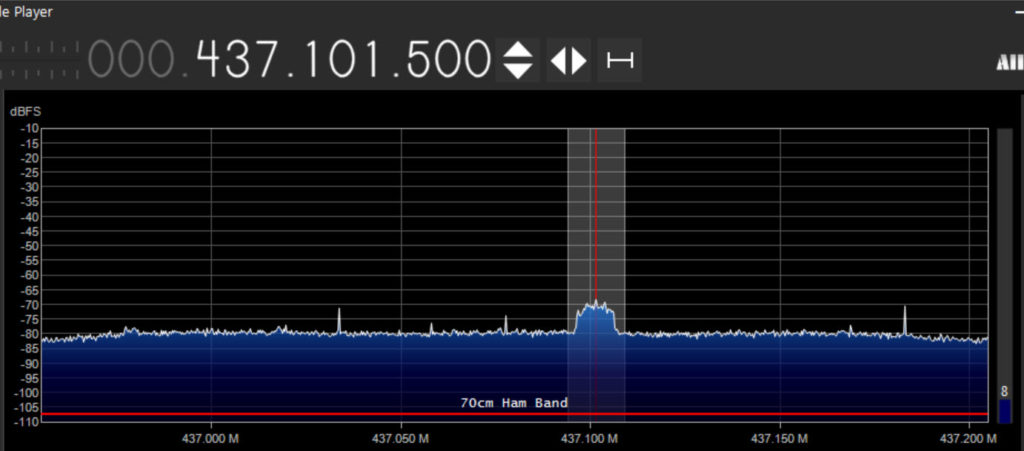
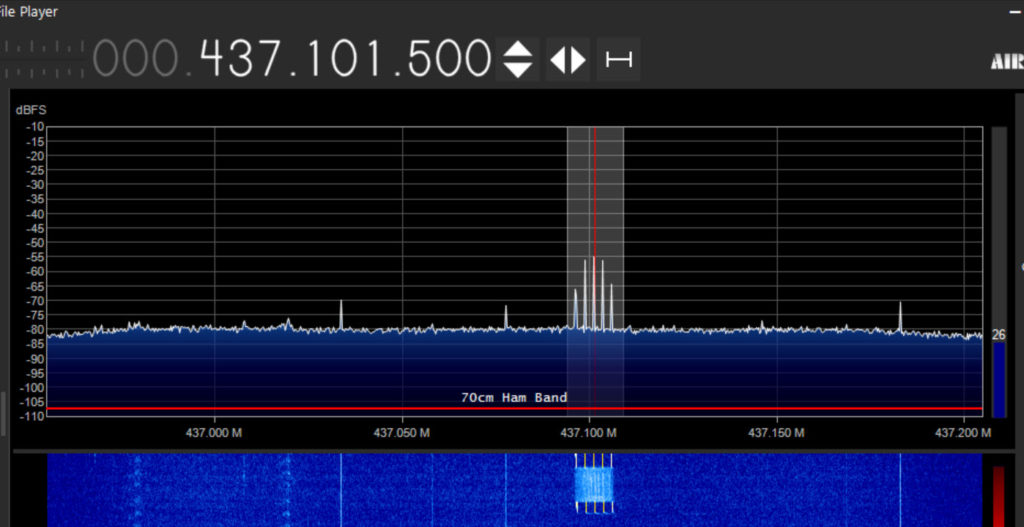
Yesterday May 6th and today May 7th there were excellent passes of EIRSAT-1 at approx noon (Figure 6 @11:50). Yesterday there was so much QRM that I could barely see the signal. Today I received a very strong pulse directly East. It starts as 5 spectral lines, then a Gaussian Distribution then ends with 5 lines as in Figures 7/8. I had to keep adjusting the RTL gain because when the QRM bursts on, the intermod went flying up which I have noticed many times before since my QTH is very hot from an RF perspective. Ok is this EIRSAT-1?? I emailed the project web page with a few queries…but no X.25 ACK. Ok let’s decode with gr_satellites.
Signal Capture Decode gr_satellites
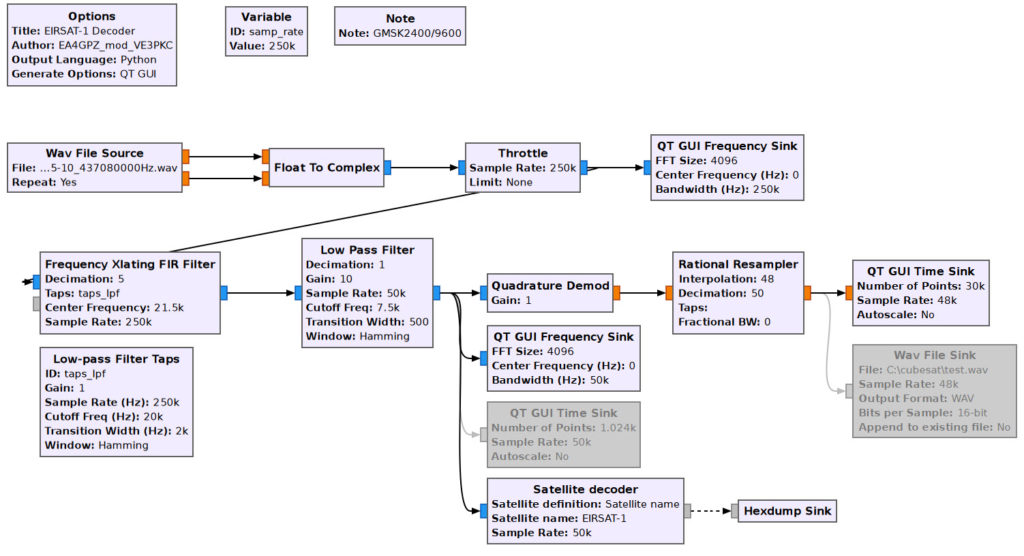
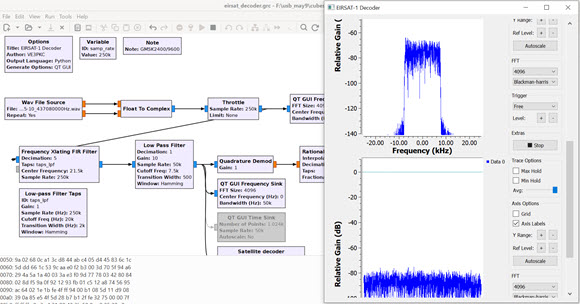
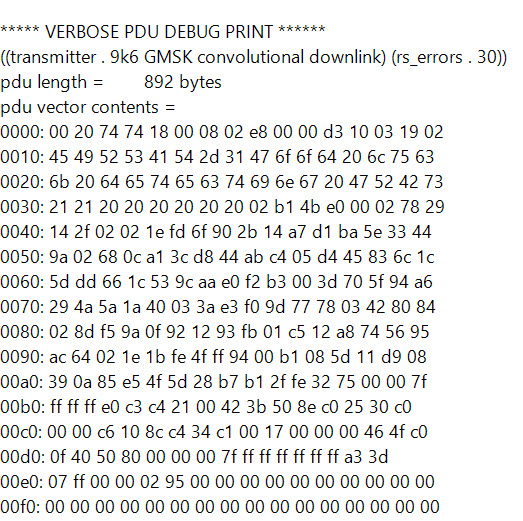
In order to assess whether the pulse was indeed EIRSAT-1 I used gr_satellites by EA4GPZ (Ref.5). Figure 9 shows the schematic and Figure 10 shows the resulting hexdump….success!
GNU Radio Companion Basics Course
Please send your comments, questions and suggestions to:
contact:

References
#1. – “RTL-SDR for 433MHz/70cm Cubesats on GNURadio”
https://jeremyclark.ca/wp/telecom/rtl-sdr-for-433mhz-70cm-cubesats-on-gnuradio/
#2. – “RTL-SDR for 433MHz/70cm Cubesats”
https://jeremyclark.ca/wp/telecom/rtl-sdr-for-433mhz-70cm-cubesats/
#3. – “AMSAT Satellite Database”
https://www.amsat.org/amateur-satellite-index
#4. – “gr_satellites Supported Satellites”
https://gr-satellites.readthedocs.io/en/latest/supported_satellites.html
#5. – “gr_satellites Tutorial/EA4GPZ”
https://www.youtube.com/watch?v=TceMth67r9c
